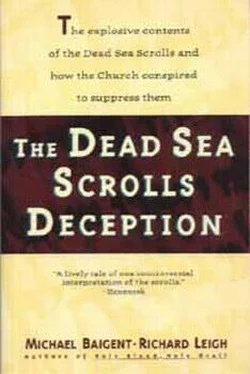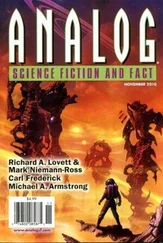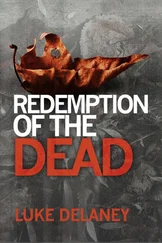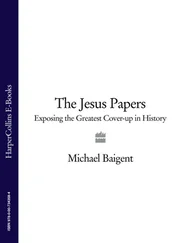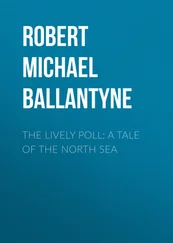Saad’s expedition led to the discovery of four caves at Wadi Murabba’at, just over eleven miles south of Qumran and some two miles inland from the Dead Sea. The material found here was less difficult to date and identify than that from Qumran, but of nearly comparable import. It derived from the early 2nd century ad — more specifically, from the revolt in Judaea orchestrated by Simeon bar Kochba between ad 132 and 135. It included two letters signed by Simeon himself and furnished new data on the logistics, economics and civil administration of the rebellion, which had come within a hair’s-breadth of success — Simeon actually captured Jerusalem from the Romans and held the city for some two years. According to Robert Eisenman, this insurrection was a direct continuation of events dating from the previous century — events which involved certain of the same families, many of the same underlying principles, and perhaps also Jesus himself.
Shortly after the discovery of the caves at Murabba’at, activity around Qumran began to gather momentum. Having returned from Europe, Father de Vaux began to excavate the site, together with Harding and fifteen workers. These excavations were to continue for the next five years, until 1956. Among other things, they exhumed a complex of buildings, which were identified as the ‘Essene community’ spoken of by Pliny.
Pliny himself perished in ad 79, in the eruption of Vesuvius which buried Pompeii and Herculaneum. Of his works, only the Natural History survives — which, however, deals with both the topography and certain events in Judaea. Pliny’s sources are unknown, but his text refers to the sack of Jerusalem in AD 68, and must therefore have been composed some time after that. There was even for a time a legend, now discredited, that, like Josephus, he accompanied the Roman army on its invasion of Palestine. In any case, Pliny is one of the few ancient writers not just to mention the Essenes by name, but to locate them geographically. He locates them, quite specifically, on the shores of the Dead Sea:
On the west side of the Dead Sea, but out of range of the noxious exhalations of the coast, is the solitary tribe of the Essenes, which is remarkable beyond all the other tribes in the whole world, as it has no women and has renounced all sexual desire, has no money, and has only palm-trees for company. Day by day the throng of refugees is recruited to an equal number by numerous accessions of persons tired of life and driven thither by the waves of fortune to adopt their manners… Lying below the Essenes was formerly the town of Engedi… next comes Masada. 13
De Vaux took this passage as referring to Qumran, assuming that ‘below the Essenes’ means ‘down’, or to the south. The Jordan, he argued, flows ‘down’, or south, to the Dead Sea; and if one continues further south, one does indeed come to the site of Engedi. 14Other scholars dispute de Vaux’s contention, maintaining that ‘lying below’ is to be understood literally — that the Essene community was situated in the hills above Engedi.
Whether Qumran was indeed Pliny’s community or not, de Vaux was spurred on to further efforts. In the spring of 1952, he endeavoured to wrest the initiative from the Bedouin and make a systematic survey of all caves in the vicinity. The survey was conducted between 10 and 22 March 1952 by de Vaux, three other members of the Ecole Biblique and William Reed, the new director of the Albright Institute. They were accompanied by a team of twenty-four Bedouin under the authority of three Jordanian and Palestinian archaeologists. 15Not surprisingly, perhaps, it was the Bedouin who did all the work, clambering up the steep, often precipitous cliff-faces and exploring caves. The archaeologists preferred to remain below, compiling inventories, drawing up maps and charts. As a result, the survey was not very comprehensive. The Bedouin, for example, chose not to divulge the existence of certain caves they had found. Several scrolls did not come to light until much later. And one is known never to have been recovered from the Bedouin.
Altogether, the survey encompassed some five miles of cliff-face. It examined 267 sites according to de Vaux, 273 sites according to William Reed. According to de Vaux, it yielded thirty-seven caves containing pottery. According to Reed, it yielded thirty-nine. The official map produced at the conclusion of the expedition shows forty. 16Shards were found for more than a hundred jars, a highly speculative figure. Such imprecision is typical of Qumran research.
But if the 1952 survey was amateurish, it also produced one genuinely important discovery. On 20 March, two days before the end of the survey, in the site designated Cave 3, a research team found two scrolls — or, rather, two fragments of the same scroll — of rolled copper. The writing on it had been punched into the metal. Oxidisation had rendered the metal too brittle to be unrolled. Before it could be read, the scroll would have to be sliced open in a laboratory. Three and a half years were to pass before the Jordanian authorities allowed this to be done. When they at last consented, the cutting was performed in Manchester under the auspices of John Allegro, a member of de Vaux’s team. The first segment of the scroll was finished in summer 1955, the second in January 1956.
The scroll proved to be an inventory of treasure — a compilation or listing of gold, silver, ritual vessels and other scrolls. Apparently, at the commencement of the Roman invasion, this treasure had been divided into a number of secret caches; and the ‘Copper Scroll’, as it came to be known, detailed the contents and whereabouts of each such cache. Thus, for example:
item 7. In the cavity of the Old House of Tribute, in the Platform of the Chain: sixty-five bars of gold. 17
According to researchers, the total hoard would have amounted to some sixty-five tons of silver and perhaps twenty-six of gold. To this day, there is some argument as to whether the treasure ever in fact existed. Most scholars, however, are prepared to accept that it did and that the scroll comprises an accurate inventory of the Temple of Jerusalem. Unfortunately, the locations indicated by the scroll have been rendered meaningless by time, change and the course of two millennia, and nothing of the treasure has ever been found. A number of people, certainly, have searched for it.
In September 1952, six months after the official survey, there surfaced a new source of scrolls. It proved to be a cave within some fifty feet of the actual ruins of Qumran, which de Vaux and Harding had excavated in 1951. Here, at the site demarcated Cave 4, the largest discovery of all was made — again, predictably, by the Bedouin. Some years would be required to piece this material together. By 1959, however, most of the fragments had been organised. The work was conducted in a large room, which came to be known as the ‘Scrollery’, in the Rockefeller Museum.
The Rockefeller Museum — or, to give it its official name, the Palestine Archaeological Museum — had first opened in 1938, during the British mandate, and was built from funds donated by John D. Rockefeller. It contained not only exhibition space, but also laboratories, photographic dark-rooms and the offices of the Department of Antiquities. Shortly before the mandate ended in 1948, the museum had been turned over to an international board of trustees. This board was made up of representatives of the various foreign archaeological schools in Jerusalem — the French Ecole Biblique, for example, the American Albright Institute, the British Palestine Exploration Society. For eighteen years, the Rockefeller was to exist as an independently endowed institution. It managed to retain this status even through the Suez Crisis of 1956, when many of its staff were recalled to their home countries. The only casualties of the crisis were Gerald Lankester Harding, dismissed from his post as director of the Department of Antiquities, and the scrolls themselves. During hostilities, they were removed from the museum, placed into thirty-six cases and locked up in a bank in Amman. They were not returned to Jerusalem until March 1957, ‘some of them slightly moldy [sic] and spotted from the damp vault’. 18
Читать дальше
